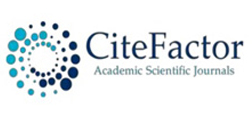Original Research Article
Assessment, Characterization, Identification and Prioritization of Major Constraints and Potentials of Three Selected Community Watersheds of Agarfa District, Bale Zone, Oromia, Ethiopia
Mulugeta Eshetu, Bayeta Gadissa, Regassa Gosa, Daniel Abegeja, Tesfaye Ketema
East African Scholars Multidiscip Bull; 2024, 7(8): 129-159
DOI: https://doi.org/10.36349/easjmb.2024.v07i08.001
Abstract
PDF
FULL TEXT
E-PUB
186 Downloads | Oct. 11, 2024
ABSTRACT
The severity of land degradation due to different socioeconomic and biophysical pressures is a key problem encountered in watersheds. In addition, the lack of research-based references to a given community watershed, particularly with regard to socioeconomic and biophysical aspects, leads to the failure of the interventions. This study aimed to assess and characterize the socioeconomic and biophysical conditions of three selected (Oda Chefo, Wabe Seada, and Oda Nagelle) Community Watersheds of the Agarfa District of Bale Zone, Oromia, Ethiopia. Furthermore, it identifies and prioritizes constraints and opportunities for scientists, planners, intervention, impact analysis, and project performance evaluation. Communities' watersheds were selected and delineated, followed by household interviews, focus group discussions, and biophysical characterization to generate data. The study used a random sampling technique and a total of 121 sample sizes for socioeconomic data, watershed delineation, slope classification, soil type, and LULC classification map developed based on the preliminary outlet identified with the help of GPS reading and ArcGIS 10.5 software. The socioeconomic parameters were analyzed using SPSS version 20 software. The result of the baseline survey identified key constraints such as soil erosion, soil fertility decline, deforestation and climate change, feed and fodder shortage, livestock disease, human disease, unemployment, food insecurity, water shortage, lack of credit access, market, road, cooperatives, high input price, pest and disease, yield decline and lack of irrigation access. The results revealed that the availability of the labor force, local market accessibility, transport services, informal farmer cooperatives, livestock clinics, youth and women associations, and informal intuitions are the main opportunities in selected community watersheds. In conclusion, baseline surveying before any watershed management practice intervention plays ....
ABSTRACT
Vitamin D is a crucial hormone in phosphocalcium homeostasis. Although vitamin D intoxication is rare, its complications can be dramatic, affecting both the short-term vital prognosis and long-term renal function. We report here a case of hypercalcemia due to vitamin D intoxication, with the aim of analyzing the factors that contribute to vitamin D intoxication, assessing the consequences of this intoxication on the child's health, and proposing recommendations for appropriate management. The patient was a 6-year-old child with a history of common nutritional rickets for which he had been receiving vitamin D supplementation. The patient was admitted to the pediatric emergency department of Children's Hospital in Rabat for incoercible vomiting and acute dehydration. Biological assessment showed severe hypercalcemia at 150mg/l, hypercalciuria at 192 mg /24 hours. The serum level of 25(OH) vitamin D was greater than 154 ng/ml. The diagnosis retained was as hypercalcemia due to vitamin D intoxication, confirmed by an in-depth interview with the parents, who found a over administration of the recommended dose. The evolution was marked by chronic kidney disease due to nephrocalcinosis (creatinine clearance according to the SCHWARTZ formula 17 ml/min). Heterogeneity of the expression forms of vitamin D dosages and intake regimens leads to confusion and increases the risk of misuse, as in the case of our patient, where a misreading of the medical prescription led to the intentional ingestion of toxic doses, hence the need for close and adequate medical supervision and awareness of vitamin D supplement use among healthcare professionals and parents.
Original Research Article
ABSTRACT
This prospective observational study was carried out to compare the symptomatic response and acceptable toxicity in concurrent chemo-radiotherapy and radiotherapy alone in the treatment of cervical cancer. A total of 60 patients (30 patients in arm A & 30 patients in arm B) who have biopsy proven cervical carcinoma with no history of previous treatment were selected from the Department of radiotherapy Rajshahi Medical College Hospital, Rajshahi & in the department of Radiation & Oncology, National Institute of Cancer Research & Hospital. All patients in both arms received external beam radiation with 50Gy in 25 daily fractions over five weeks. Followed by three insertions (one insertion per week) of Intracavitary brachytherapy each 700 cGy. Patients in arm-A received Inj. Cisplatin 40mg/m2 in IV infusion on the first day of each treatment per week in addition to radiotherapy. In this study it was observed that a significant symptomatic improvement was found in arm-A after treatment than arm-B and no severe unwanted reaction was noted in most of the patients. Systematic toxicity developed in both groups and comparatively more in arm-A (chemo radiation) but that was not statistically significant and well managed with conservative treatment. Regarding performance status patients treated with concurrent chemo radiation showed better performance status than the patient treated with radiotherapy alone. In this study it was observed that patients of carcinoma cervix treated with concurrent chemo radiotherapy was effective for symptomatic improvement and feasible with acceptable toxicity for advanced cancer of the uterine cervix than those with radiation alone.
Original Research Article
ABSTRACT
Strategic curriculum delivery initiatives in schools helps in identifying emerging trends and anticipate future challenges, allowing them to prepare and respond proactively so as to bring change in students’ academic performance. The purpose of this study was to determine the extent to which strategic curriculum delivery initiatives influence academic performance. The study employed a descriptive survey design. Data was analysed both qualitatively and quantitatively. Qualitative data on interview schedules were organized based on research objectives and themes of study. Data was presented using percentages, means and frequency distribution tables for easier interpretation. This study’s findings were: The strategic curriculum delivery initiatives have got very good influence on academic performance at national and extra county schools, good at county schools and below average at sub-county secondary schools. The study, concluded that, National and Extra- County secondary schools have very good influence of strategic curriculum delivery initiatives on academic performance compared to county and sub-county secondary schools hence, the influence of the strategic curriculum delivery initiatives varies depending on the category of the school.
ABSTRACT
Sex ratio at birth is defined as the number of female births per 1000 male birth. Declining Child Sex Ratio causes imbalances in child population and expected to have serious socio-demographic consequences, further reinforcing the subordination of girls and women. The issue, therefore, requires a multi-faceted response to enhance the value of girls by change in negative perceptions on girl child as well as legal measures to curb misuse of medical technology.



















